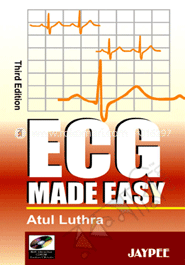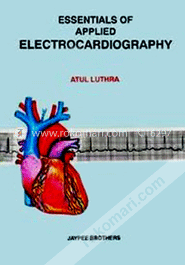This book is a well-illustrated guide to the most successful technique of ECG. This simple, cost-effective and readily available diagnostic modality is still a primary tool to determine the status and condition of heart. But mastering the ECG is a formidable task. It explains basics and therapeutic aspects so that students prepare confidently for their exams.
Table Of Contents
1. Nomenclature of ECG Deflections, Intervals and Segments
2. The Electrocardiographic Leads
3. The ECG Grid and Normal Values
4. Determination of the Electrical Axis
5. Determination of Heart Rate and Rhythm
6. Abnormalities of the P Wave
7. Abnormalities of the QRS Complex
8. Abnormalities of the T Waves
9. Abnormalities of the U Waves
10. Abnormalities of the P-R Segment
11. Abnormalities of the S-T Segment
12. Abnormalities of the P-R Interval
13. Abnormalities of the Q-T Interval
14. Premature Beats Interrupting Regular Sinus Rhythm
15. Pauses During Sinus Rhythm
16. Fast Regular Rhythm with Narrow QRS Complexes
17. Normal Regular Rhythm with NarrowQRS Complexes
18. Fast Irregular Rhythm with Narrow QRS Complexes
19. Fast Regular Rhythm with Wide QRS Complexes
20. Normal Regular Rhythm with Wide QRS Complexes
21. Fast Irregular Rhythm with Bizarre QRS Complexes
22. Slow Regular Rhythm with Narrow QRS Complexes
23. Slow Irregular Rhythm with Narrow QRS Complexes
24. Slow Regular Rhythm with Wide
QRS Complexes
Index
![]()

 Hello, Sign in
Hello, Sign in 
 Cart
Cart 































